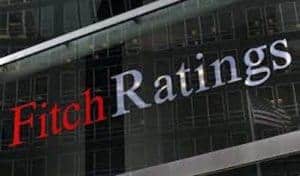 Fitch has moved to upgrade ratings that impact assets originated on the Prosper marketplace lending platform. According to the rating agency, Fitch taken the following rating actions on two Citi Held for Asset Issuance trusts, which are backed by marketplace loans:
Fitch has moved to upgrade ratings that impact assets originated on the Prosper marketplace lending platform. According to the rating agency, Fitch taken the following rating actions on two Citi Held for Asset Issuance trusts, which are backed by marketplace loans:
- CIiti Held for Asset Issuance 2015-PM3 (CHAI 2015-PM3):
- Class B upgraded to ‘A+sf’ from ‘BBB+sf’; Outlook Stable;
- Class C affirmed at ‘BB-sf’; Outlook revised to Stable from Negative.
- Citi Held for Asset Issuance 2016-PM1 (CHAI 2016-PM1):
- Class A upgraded to ‘A+sf’ from ‘Asf’; Outlook Stable;
- Class B upgraded to ‘Asf’ from ‘BBBsf’; Outlook Stable;
- Class C affirmed at ‘Bsf’; Outlook Stable.
The rating actions are said to reflect the growth to date in hard credit enhancement (CE) available to the class A and B notes and stabilization of asset performance. Fitch increased its lifetime gross default expectations slightly to 13.7% from 13.6% for CHAI 2015-PM3 and to 15% from 14.9% for CHAI 2016-PM1.
The key ratings drivers are as follows:
Collateral Quality: The trusts consist of unsecured consumer loans that are with original terms of 36 or 60 months originated and serviced on Prosper’s marketplace online lending platform. Fitch’s gross default assumption for the life of the CHAI 2015-PM3 collateral is 13.7%, which translates to 13.7% of the current pool. Fitch’s gross default assumption for life of the CHAI 2016-PM1 collateral is 15%, which translates to 15.1% of the current pool. Fitch assumes a base case recovery rate of 7%. At the ‘A+sf’ level, a default multiple of 3.7x and a recovery haircut of 33% are applied.
Increasing Credit Enhancement: Hard CE for CHAI 2015-PM3 has grown since close from 26.5% to 62.9% for the class B notes and from 12% to 18.1% for the class C notes. Likewise, hard CE for CHAI 2016-PM1 has grown since close from 33% to 74.7% for the class A notes, from 25.1% to 53.3% for the class B notes, and from 12% to 17.9% for the class C notes. While subordination available to the class A and B notes will grow as the transactions pay down, overcollateralization (OC) is at its target release level of 16.5% for both transactions, and will not grow until it hits its floor of 2% of the initial balance, which occurs at 12.1% pool factor.
 Rating Cap at ‘Asf’: Fitch placed a rating cap on the notes at the ‘Asf’ category, considering primarily the sector’s untested performance throughout a full economic cycle. History for unsecured installment loans originated via online platforms such as Prosper’s thus far has only been during a benign macro environment. Furthermore, the underlying consumer loans are likely at or near the bottom of repayment priority for consumers, since repayment does not provide the consumer ongoing utility as auto loans, credit cards and cellphone plans do. The cap only constrains the CHAI 2015-PM3 class B and CHAI 2016-PM1 class A notes.
Rating Cap at ‘Asf’: Fitch placed a rating cap on the notes at the ‘Asf’ category, considering primarily the sector’s untested performance throughout a full economic cycle. History for unsecured installment loans originated via online platforms such as Prosper’s thus far has only been during a benign macro environment. Furthermore, the underlying consumer loans are likely at or near the bottom of repayment priority for consumers, since repayment does not provide the consumer ongoing utility as auto loans, credit cards and cellphone plans do. The cap only constrains the CHAI 2015-PM3 class B and CHAI 2016-PM1 class A notes.
Adequate Servicing Capabilities: Prosper will service the pool of loans, and Citibank, N.A. will act as the backup servicing. Fitch considers both parties to be adequate servicers for this pool based on prior experience and capabilities.
Fitch said that unanticipated increases in the frequency of defaults could produce loss levels higher than the base case and would likely result in declines of CE and remaining loss coverage levels available to the investments. Decreased CE may make certain ratings on the investments susceptible to potential negative rating actions, depending on the extent of the decline in coverage.
Rating sensitivities provide greater insight into the model-implied sensitivities the transaction faces when one or two risk factors are stressed while holding others equal. The modeling process first uses the estimation and stress of a base case loss assumption to reflect asset performance in a stressed environment. Second, structural protection was analyzed with Fitch’s proprietary cash flow model. The results below should only be considered as one potential outcome as the transaction is exposed to multiple risk factors that are all dynamic variables.
CHAI 2015-PM3:
- Default increase 10%: class B ‘A+sf’; class C ‘B+sf’;
- Default increase 25%: class B ‘A+sf’; class C ‘B-sf’;
- Default increase 50%: class B ‘Asf’; class C ‘B-sf’;
- Recoveries decrease to 0%: class B ‘A+sf’; class C ‘B+sf’.
CHAI 2016-PM1:
- Default increase 10%: class A ‘A+sf’; class B ‘A-sf’; class C ‘B-sf’;
- Default increase 25%: class A ‘A+sf’; class B ‘BBB+sf’; class C ‘CCCsf’;
- Default increase 50%: class A ‘Asf’; class B ‘BBBsf’; class C ‘<CCCsf’;
- Recoveries decrease to 0%: class A ‘A+sf’; class B ‘Asf’; class C ‘B-sf’.
Fitch added that given the cumulative net loss trigger structure, the class C notes of both trusts demonstrate exposure to further deterioration, and in particular to back-loaded losses. Given the short remaining life of the assets, Fitch modelled timing curves different from those described in the Global Consumer ABS Criteria. The front, even, and back curves, which are in three-month intervals, were 37.5%/37.5%/12.5%/12.5%, 25%/25%/25%/8.33%/8.33%/8.33%, and 18.75%/18.75%/18.75%/18.75%/6. 25%/6.25%/6.25%/6.25%, respectively.


